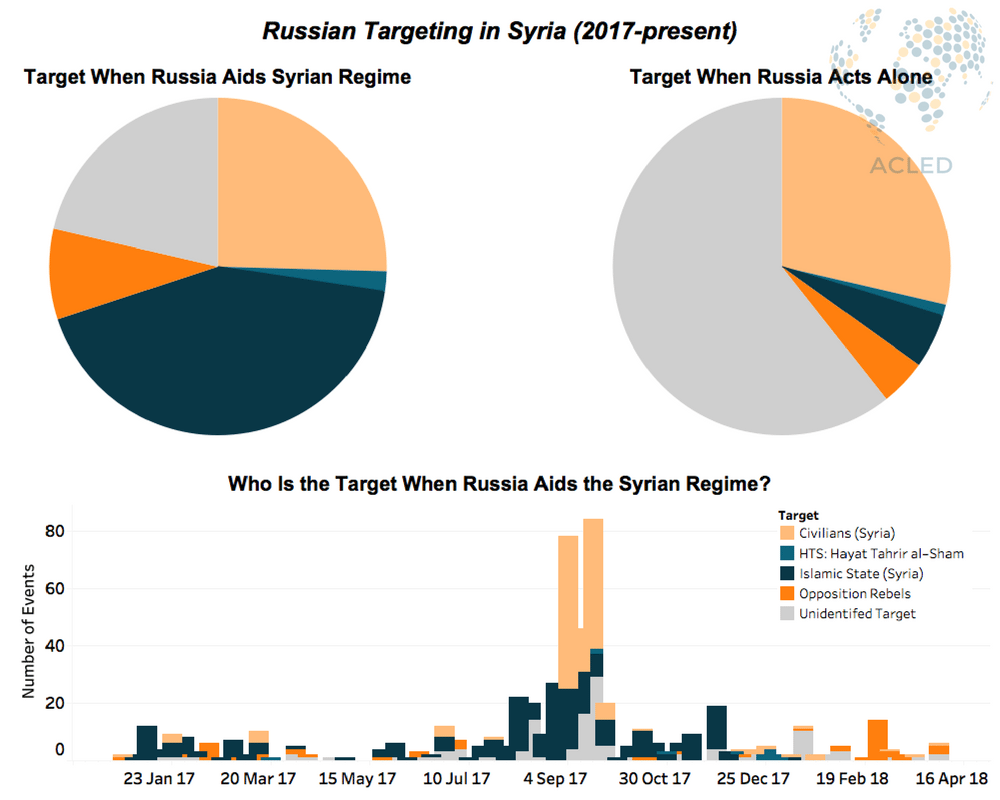There is considerable debate over Russia’s ulterior motives in Syria. While motives may be hard to disentangle, ACLED data can shed light on Russia’s choice of targets. The Russian Defense ministry insists being in Syria to fight terrorist organizations (the Islamic State and Al-Qaeda affiliates). Western governments instead claim that Russia is not in the country to fight terrorist but is supporting the Syrian regime by fighting rebels. (The Telegraph, Oct 2, 2015). ACLED data highlights that the Russian version seems to find more support in the data.
First a distinction is warranted: Russian operations are different when Russia acting on its own versus when it aids regime operations. When Russia acts alone, our data is often not clear on the choice of target; in over half of the engagements we know that a village/area is hit but additional information – whether it was for example aimed at armed combatants, material positions, or civilians – is lacking.
When Russia acts in coordination with the regime the data show that more than half of the attacks is directed against armed forces. In these cases, about 90% of the Russian activity is levelled against “Islamic State” targets. This percentage increases if we include branches of Al-Qaeda – like incarnations of “Al-Nusra Front”. In less than 10% of the cases is Russia involved in targeting rebel forces rather than terrorist organizations. Hence, the Russian claim that it is in Syria to fight terrorist organizations is more strongly supported by our data than the Western argument.
A final remark pertains, however, to a striking feature of Russian engagements: whether they act alone or in conjunction with the regime: they often hit civilians. For example, Russia has been responsible for various attacks in the de-escalation zones (Dar’a, rural Damascus, Idleb and northern Hama areas). This fuels the speculation that Russian bombardments in these areas do sometimes aid an anti-rebel agenda as terrorist organizations are hardly present.
Hence, Russia’s choice of prime targets seems to correspond largely to its official goal of attacking terrorist organizations. At the same time, the high number of civilian encounters suggest imprecise bombardment at best or a tacit (and crude) attempt to aid the regime.[1]
[1] Controlling for variation over time does not lead to a noticeably difference, although since the start of 2018, we can see that any airstrikes against the Islamic State have all but vanished.
AnalysisCivilians At RiskConflict MonitoringIslamic StateIslamist ViolenceMiddle EastViolence Against Civilians







